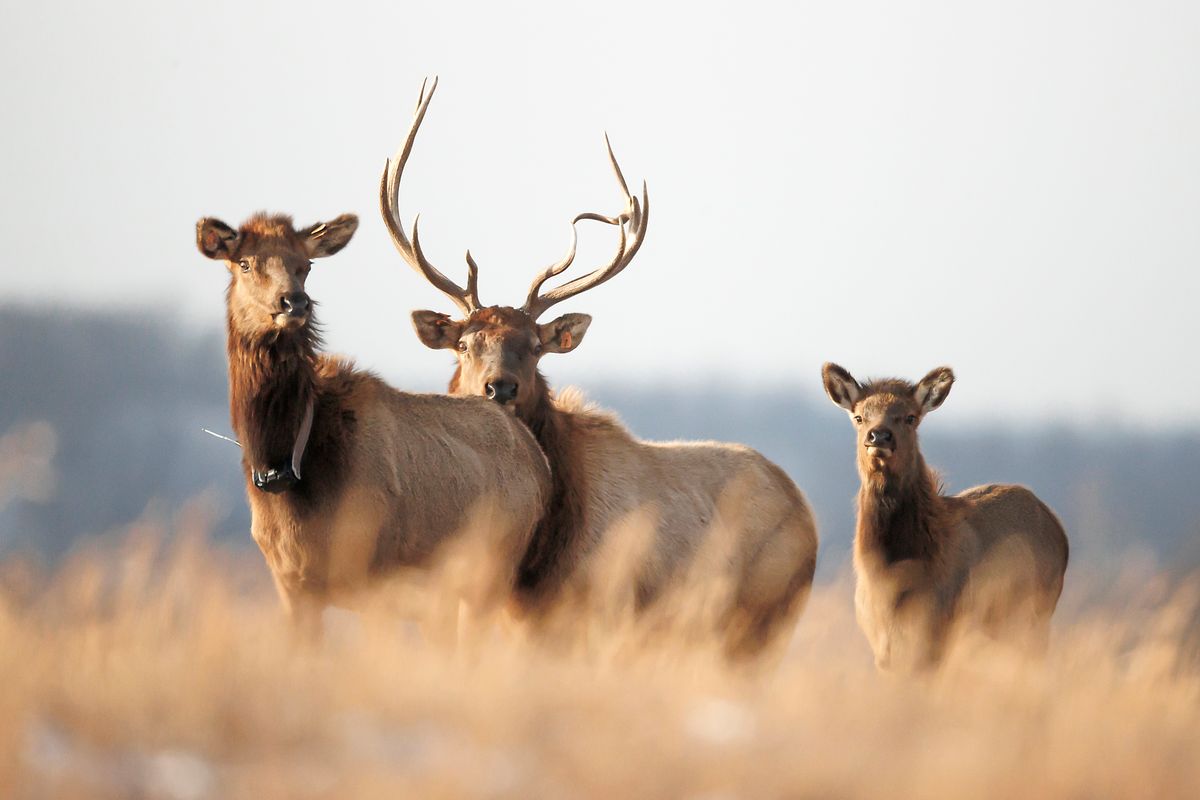Below is a news release from West Virginia University. The Rocky Mountain Elk Foundation has a conservation history dating back to 1997 in the Mountain State, including supplying funding and volunteer support for the original, successful restoration of wild, free-ranging elk in 2016, as well as later efforts. RMEF also provided funding support for the study below.
Elk are making a comeback in the Mountain State, and West Virginia University researchers are studying the genetics of the population in hopes of maintaining the health of the herd.
In 2016, elk were reintroduced to West Virginia from existing populations in Kentucky and Arizona. The animals disappeared from the state in the late 1800s due to hunting and timbering.
Thirty-nine elk came from Kentucky’s Land Between the Lakes National Recreation Center and 60 more were brought in from an Arizona herd, but 14 of the Arizona animals died due to capture stress and a parasitic brain worm.
To try to improve the odds of reintroduction success, researchers Amy Welsh and Adam Cook will study the genetic diversity of both groups.
“Genetic diversity has really important implications about the future sustainability of these populations,” said Cook, a graduate student in the WVU Davis College of Agriculture, Natural Resources and Design from Horseheads, New York. “When you lose diversity, you can get inbreeding, loss of fitness and population shrinking. So, conserving genetic diversity is an important factor in small populations.”
Cook and Welsh, program coordinator and professor of wildlife and fisheries resources, will also look for adaptive differences between the two subspecies — the elk from Kentucky are Manitoban elk, while the ones from Arizona are Rocky Mountain elk. Such differences could have an impact on their fitness in a new environment in West Virginia.
“We’re trying to link any differences we find genetically to physical characteristics of the elk,” Cook said. “Adaptive differences can express themselves in real-life ways, like body and antler size. And because of the sexual selection process, that has a large influence on whether they mate and pass their genes on to the next generation. We’re looking for genes that we can maybe link to body size or survival and reproduction.”
He and Welsh are working with the West Virginia Division of Natural Resources, which will use this adaptive study to identify individuals or groups that would be a good fit for future relocations, as animals with better adaptations will have a higher chance of success when moved.
Adaptive differences may also play a role in elk health. While the new herd faces threats from predation — mostly on calves by coyotes and black bears — brain worm has caused a higher mortality rate. White-tailed deer transmit the parasite but are not sickened by it, while elk often succumb to the infection.
“We can look and see if there is a genetic consistency with all the elk that we know have died from brain worm,” Cook said. This adaptation, albeit an unfavorable one, could help determine which animals are more likely to die from brain worm and thus inform the WVDNR on future reintroductions.
Parentage analysis is another important aspect of the project. The researchers hope to identify both parents of all 50 elk that have been born in West Virginia since the reintroduction. This will help determine if members of the two source populations are mating with each other.
The parentage analysis will also allow Welsh and Cook to see if elk from Kentucky are moving across the border and breeding with West Virginia elk.
“The Kentucky population was a reintroduction that took place around 2000,” Cook said. “And they’re the poster child for elk reintroductions in the East because they brought in 1,500 elk from six different states. They went for the quantity and diversity approach, which has worked very well. And they’ve got over 10,000 now.”
When it comes to maintaining genetic distinction, there’s no way to know how a population will behave. Welsh said an elk herd in the Smoky Mountains also comes from separate states, but the two groups are not breeding.
“In other locations, they are mixing,” she said. “So, we don’t really know what to expect, and it’s going to be interesting.”
Elk populations have continually existed west of the Mississippi, in the Rocky Mountains and into Canada. Restoration efforts to reestablish elk populations in the East began in the late 1890s, but early reintroductions failed because there was no way to monitor herds progress. Now, Welsh sees the research as a vital step in the restoration of elk in the East.
“Our lab has done a couple of these kind of reintroduction assessments after the fact,” she said. “It’s not often done in conservation and wildlife management, in terms of figuring out whether or not a reintroduction was successful, but it’s needed.”
(Photo credit: West Virginia University)
